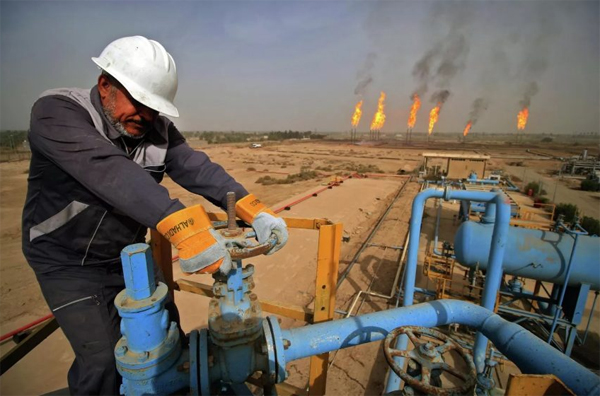U.S. benchmark WTI oil settles at a more than 2-week high above $80

Myra P. Saefong and William Watts, MarketWatch
SAN FRANCISCO/NEW YORK
EnergiesNet.com 01 17 2023
Oil futures climbed on Tuesday, with U.S. prices ending above $80 a barrel for the first time in more than two weeks.
Investors assessed data confirming a sharp slowdown in China’s economic growth last year, while looking ahead to a pickup in crude demand as the country unwinds its strict COVID-19 restrictions.
Market drivers
- West Texas Intermediate crude for February delivery CL00, 1.10% CL.1, 1.10% CLG23, 1.10% rose 32 cents, or 0.4%, to settle at $80.18 a barrel on the New York Mercantile Exchange, the highest finish for a front-month contract since Dec. 30, according to Dow Jones Market Data. There was no settlement for WTI Monday because U.S. markets were closed for the Martin Luther King Jr. Day holiday.
- March Brent crude BRN00, 0.87% BRNH23, 0.88%, the global benchmark, added $1.46, or 1.7%, at $85.92 a barrel on ICE Futures Europe. Brent fell 1% to close at $84.46 a barrel on Monday.
- Back on Nymex, February gasoline RBG23, 0.97% climbed 0.5% at $2.5451 a gallon.
- February heating oil HOG23, -0.18% edged down by nearly 0.2% to $3.251 a gallon.
- February natural gas NGG23, -3.10% climbed 4.9% to $3.586 per million British thermal units.
Market drivers
Oil’s gotten a boost from “better than expected Chinese GDP, industrial production and retail sales numbers” which came out overnight, said Colin Cieszynski, chief market strategist at SIA Wealth Management. “With China starting to reopen, this news adds to the case for energy demand to increase.”
However, China’s economy grew by 3% in 2022, less than half of the previous year’s 8.1% rate, official data showed Tuesday. That was the second-lowest annual growth rate since at least the 1970s after 2020, when growth fell to 2.4% at the start of the coronavirus pandemic.
China’s COVID curbs have been seen as a weight on crude demand, but a lifting of restrictions is expected to drive a substantial pickup. A surge in COVID-19 cases, however, has clouded the near-term outlook.
“We remain constructive and see asymmetric upside risk to the oil complex this year. Much of the conviction to our constructive tilt is geared toward 2H’23 with China’s reopening as a major driver underpinning that view,” said Michael Tran, energy strategist at RBC Capital Markets, in a note.
Global crude inventories, however, are set to build this quarter, he wrote.
“We see 2023 as a grind higher rather than gap higher type of market. However, the first couple of weeks of this year have suggested to us that a disconnect exists (for now) between the headline driven sentiment (mostly centered on China’s reopening) and what the physical market and term structure are telling us,” Tran said.
Meanwhile, geopolitical tensions continue to flare up between Russia and the European Union, said Naeem Aslam, chief market analyst at AvaTrade.
At the World Economic Forum In Davos, Russia is the target among policy makers once again, as are more sanctions on the country, he told MarketWatch. “This is basically an event which threatens the supply curve, which could push…[oil] prices higher.”
An EU ban on Russian oil product exports is set to kick in on Feb. 5.
Because demand has been soft for the last six months, supply constraints have been less of an issue but if demand rebounds, then sanctions on Russia could “potentially start to play a larger role in price action once again,” SIA Wealth Management’s Cieszynski told MarketWatch.
In a monthly report issued Tuesday, the Organization of the Petroleum Exporting Countries left its forecast for global oil-demand growth unchanged.
However, it noted that the outlook “remains surrounded by uncertainties including global economic developments, shifts in COVID-19 containment policies, and geopolitical tensions.”
Natural-gas futures, meanwhile, were a standout Tuesday — tacking on nearly 5% for the session.
After four consecutive weeks of declines, Nymex natural-gas futures turned “bullish on the back of colder weather outlooks,” said Victoria Dircksen, commodity analyst at Schneider Electric. The National Oceanic and Atmospheric Administration’s eight to 14-day outlook predicts colder-than-average temperatures across the West, Midwest, and South Central parts of the lower 48 states, she said in a daily note.
marketwatch.com 01 17 2023











